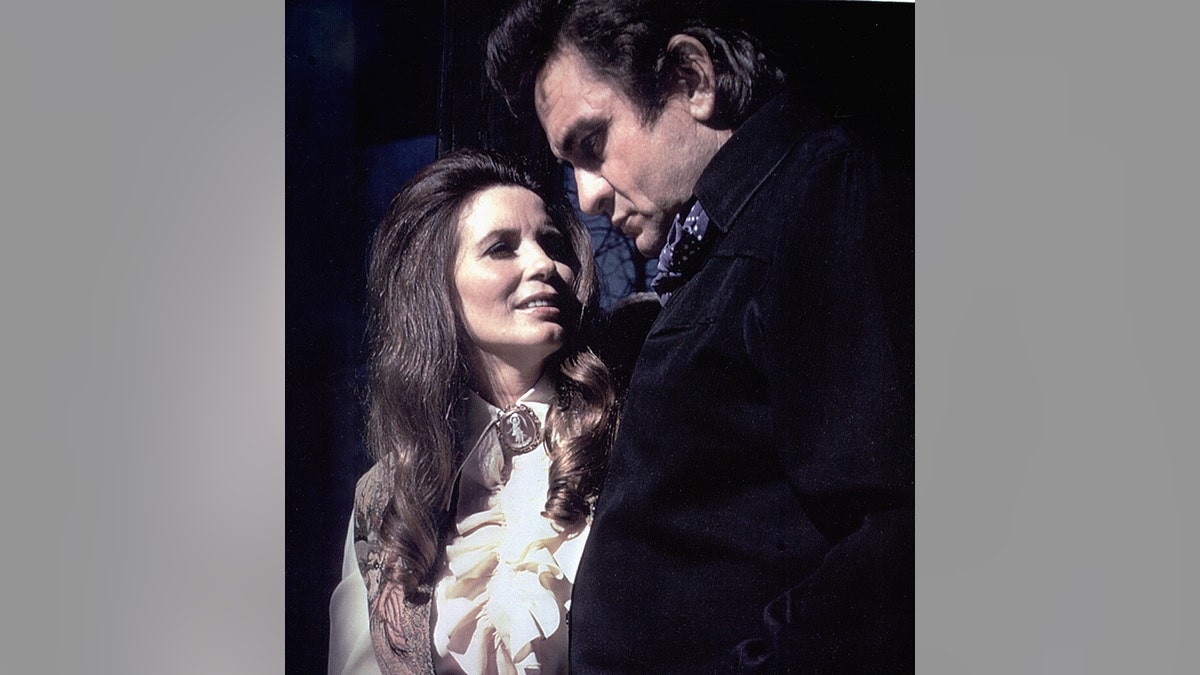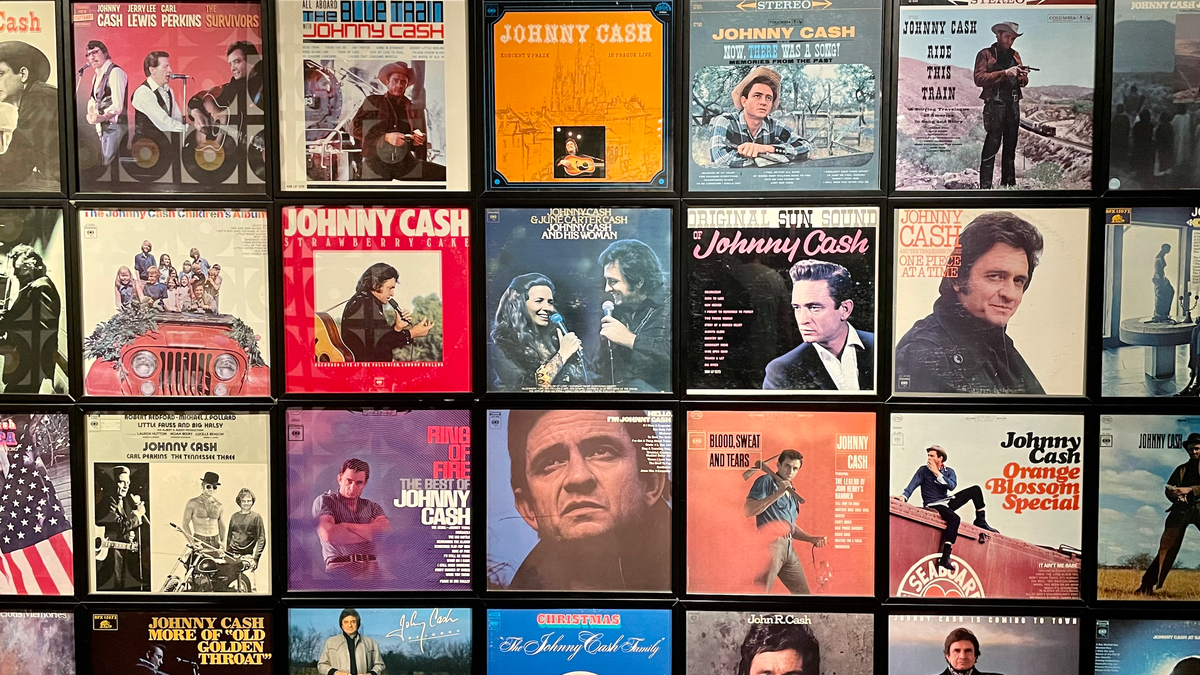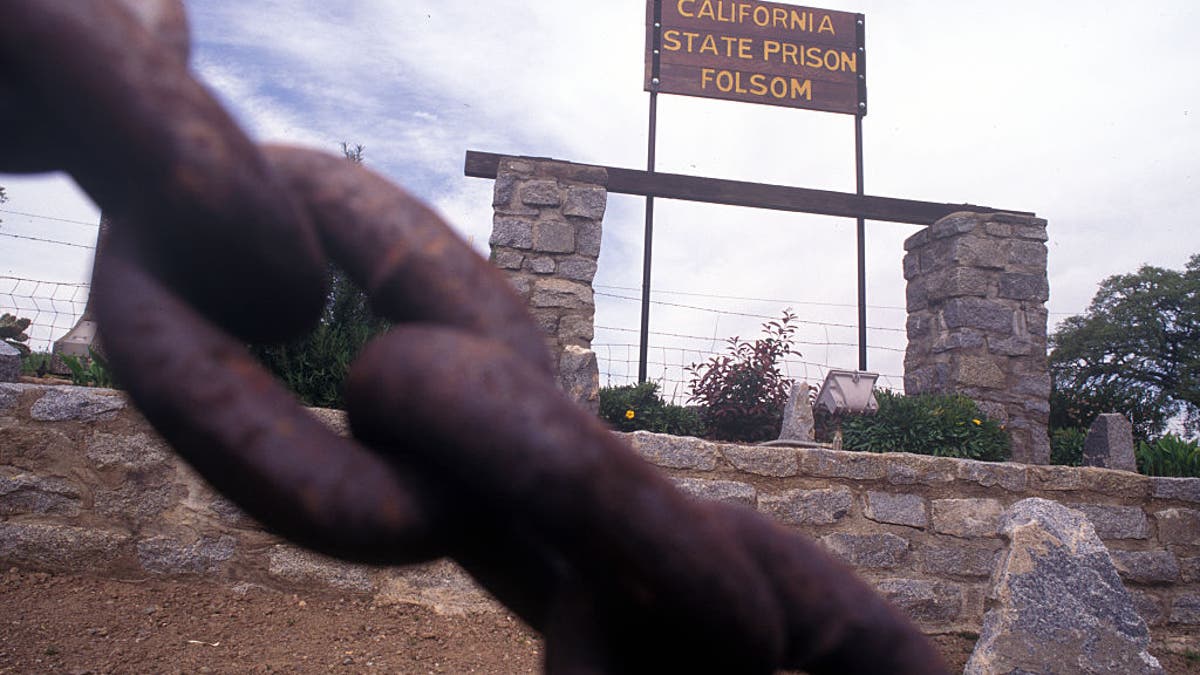Why Johnny Cash owns Nashville, the Music City
The entertainer cemented his legacy by hosting his nationally televised variety show from Nashville, Lisa Errington of Ryman Auditorium told Fox News Digital.
Johnny Cash, backed by an all-star ensemble of talent, stepped on stage at California State Prison in Folsom on this day in history, Jan. 13, 1968.
It proved one of the most legendary concerts in American music lore — ending with a song that made a star out of an inmate seated in the front row.
The Folsom Prison performance turned into one of the top-selling albums of the 1960s, reinvigorated Cash’s career and left a lingering imprint on American pop culture.
"The concert and its star bore into the international imagination and for various reasons never left it," Rolling Stone said in May 2018, celebrating the 50th anniversary of the live album, "Johnny Cash At Folsom Prison," released four months after the show.
"Dressed in his trademark black … he paradoxically celebrated prison and outlaw life while creating a damning portrait of the prison experience that pricked the era’s concern for society’s outcasts."

Johnny Cash performs live in Amsterdam, Holland in 1972. The celebrated performer brought the sounds of rural America to an international audience. (Gijsbert Hanekroot/Redferns)
Cash performed two shows at Folsom Prison that day.
He was joined on stage by wife and fellow country star singer June Carter Cash, rockabilly legend Carl Perkins on guitar, the Statler Brothers on vocals, plus his longtime touring band, the Tennessee Three.
"Hello, I'm Johnny Cash," the singer boomed in his gravelly baritone as the audience of inmates erupted in hoots and applause.
JOHNNY CASH IS KING IN NASHVILLE: HIS TUNES, LEGACY AND LEGEND RULE THE MUSIC CITY
He immediately kicked into "Folsom Prison Blues," a signature Cash tune he had recorded more than a decade earlier.
"I ain't seen the sunshine/since I don't know when/I'm stuck in Folsom Prison/and time keeps dragging on," Cash croons.
Cash was joined on stage by June Carter Cash, Carl Perkins, the Statler Brothers and his touring band the Tennessee Three.
He performed 18 more songs, according to a chronicle of the show at Setlist.fm.
The concert included many of his darkest dirges: "Cocaine Blues," "Long Black Veil" and a cover of "Green, Green Grass of Home," a prison anthem popularized by Porter Wagoner just three years earlier.

UNITED STATES - June Carter Cash and Johnny Cash perform on stage. (GAB Archive/Redferns)
It tells the tale of a man on death row envisioning his final ride, to be buried beneath an oak tree on a plot of family land.
Cash closed the show with "Greystone Chapel," written by Folsom Prison inmate Glen Sherley.
The performer discovered the song the night before the concert.
"I got to the motel and a preacher friend of mine brought me a tape of a song called ‘Greystone Chapel,’" Cash told Life magazine in 1994.
"He said a convict had written it about the chapel at Folsom. I listened to it one time and I said, ‘I've got to do this in the show tomorrow.’ So I stayed up and learned it, and the next day the preacher had him in the front row."
"Folsom Prison Blues" is the signature tune from the performance and became Cash's first no. 1 country hit in five years.
"I announced, ‘This song was written by Glen Sherley' … Everybody just had a fit, screaming and carrying on."
"Greystone Chapel" is one of 17 tracks from the two shows on the live album "Johnny Cash at Folsom Prison" released in May 1968.

DEC. 9, 2019: A copy of the record album, "Johnny Cash at Folsom Prison," for sale at an antique shop in Santa Fe, New Mexico. The vinyl record was released by Columbia Records in 1968. (Robert Alexander/Getty Images)
Sherley enjoyed a brief taste of stardom as a performer and songwriter on the strength of "Greystone Chapel" after being released from prison in 1971.
But he descended back into crime and committed suicide in 1978.
Merle Haggard was not an inmate at the Folsom Prison performance, despite common legend.
Haggard was, however, incarcerated at San Quentin State Prison in California when he saw Cash perform in 1958.
"The electrifying quality of this album is that Cash sings of men with 99-year sentences to men with 99-year sentences."
It was the first of at least 30 Cash prison performances, according to the Library of Congress.
"Johnny Cash at Folsom Prison" proved a huge hit.
It was the No. 3-selling album of the year, behind "In-A-Gadda-Da-Vida" by Iron Butterfly and The Beatles "White Album." Cash's recording boasts more than 3 million in certified sales.
"The electrifying quality of this album is that Cash sings of men with 99-year sentences to men with 99-year sentences," the Guardian of London wrote in a contemporary review of the album.

A small portion of a wall of album covers at the Johnny Cash Museum in Nashville. Across from the album covers is a display of vinyl records representing Cash's incredible 134 Billboard hit singles. (Kerry J. Byrne/Fox News Digital)
"Folsom Prison Blues" is the signature tune from the performance and became Cash's first No. 1 country hit in five years.
The live 1968 version has supplanted in popular memory the original studio track, a minor hit that appeared on the artist’s debut 1957 album, "Johnny Cash with His Hot and Blue Guitar!"
The lament of life behind bars resonated with the residents of notorious Folsom Prison.
"I shot a man in Reno, just to watch him die." — Johnny Cash, "Folsom Prison Blues"
It is "one of the nation’s first maximum-security prisons built in the decades following the California Gold Rush," according to the California Department of Corrections and Rehabilitation.
"Throughout Folsom’s violent and bloody history, numerous riots and escape attempts have resulted in both inmate and staff deaths."

Signage outside of Folsom State Prison. California State Prison, Sacramento, is a male-only maximum security state prison in the city of Folsom. The facility is also called New Folsom, which used to be its official name. The facility is located adjacent to Folsom State Prison with a staff of about 1,600 and annual operating budget of about $190 million. Opened in 1880, Folsom is the second-oldest prison in the state after San Quentin. (Axel Koester/Corbis via Getty Images)
"I shot a man in Reno, just to watch him die," Cash sings in the heinous lyrical hook of "Folsom Prison Blues."
Cash later explained the moment he wrote the violent verse.
CLICK HERE TO GET THE FOX NEWS APP
He said, "I sat with my pen in my hand, trying to think up the worst reason a person could have for killing another person, and that’s what came to mind."
The Folsom Prison audience cheered and hollered when he delivered the line on stage.
For more Lifestyle articles, visit www.foxnews.com/lifestyle.

